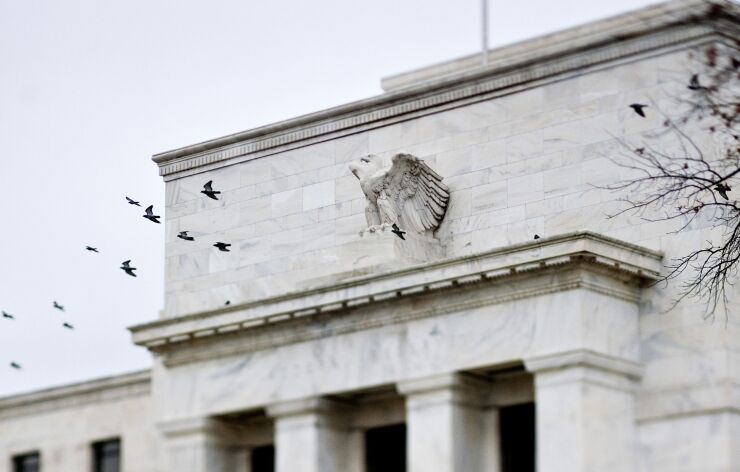The Federal Reserve is about to start shrinking its $8.9 trillion balance sheet, deploying a second tool along side higher interest rates to curb inflation, though officials don’t know just how effective it will be.
After doubling in size through asset purchases in the first two years of the pandemic, the balance sheet will be reduced at a pace that’s almost twice as fast as after the last financial crisis. While the process officially commences on Wednesday, the first U.S. Treasury securities won’t run off until $15 billion mature on June 15.

The Fed is capping monthly runoff at $47.5 billion — $30 billion for Treasuries and $17.5 billion for mortgage-backed securities — until September. Those thresholds will then double to a combined $95 billion. That compares to a peak of $50 billion a month when the Fed performed the exercise starting in 2017.
Officials say the reduction will work in tandem with interest rate increases to cool price pressures by tightening financial conditions. But it’s not clear how much impact the balance sheet will have. As Fed Gov. Christopher Waller put it in a speech on Monday, estimates “using a variety of models and assumptions” are “highly uncertain.”
The Fed deployed massive asset purchases during the 2008 financial crisis for the first time since World War II, expanding the balance sheet to about $4.5 trillion by the time it stopped buying at the end of 2014. It then waited three years before allowing it to begin shrinking at the end of 2017, reducing it to about $3.8 trillion by September 2019.
Uncertainty over the course of the balance sheet was said by commentators to have contributed to the market turmoil that ultimately helped bring an end to the Fed’s last rate-hike campaign, which concluded in December 2018. Now, the Fed is also raising its benchmark rate at a faster pace in a bid to tighten financial conditions and tame inflation, which in recent months has reached the highest levels in four decades.
Minutes of the Fed’s most recent policy meeting, on May 3-4, said that, “Regarding risks related to the balance-sheet reduction, several participants noted the potential for unanticipated effects on financial market conditions.” The next meeting is scheduled for June 14-15.
— With assistance from Elizabeth Stanton.





